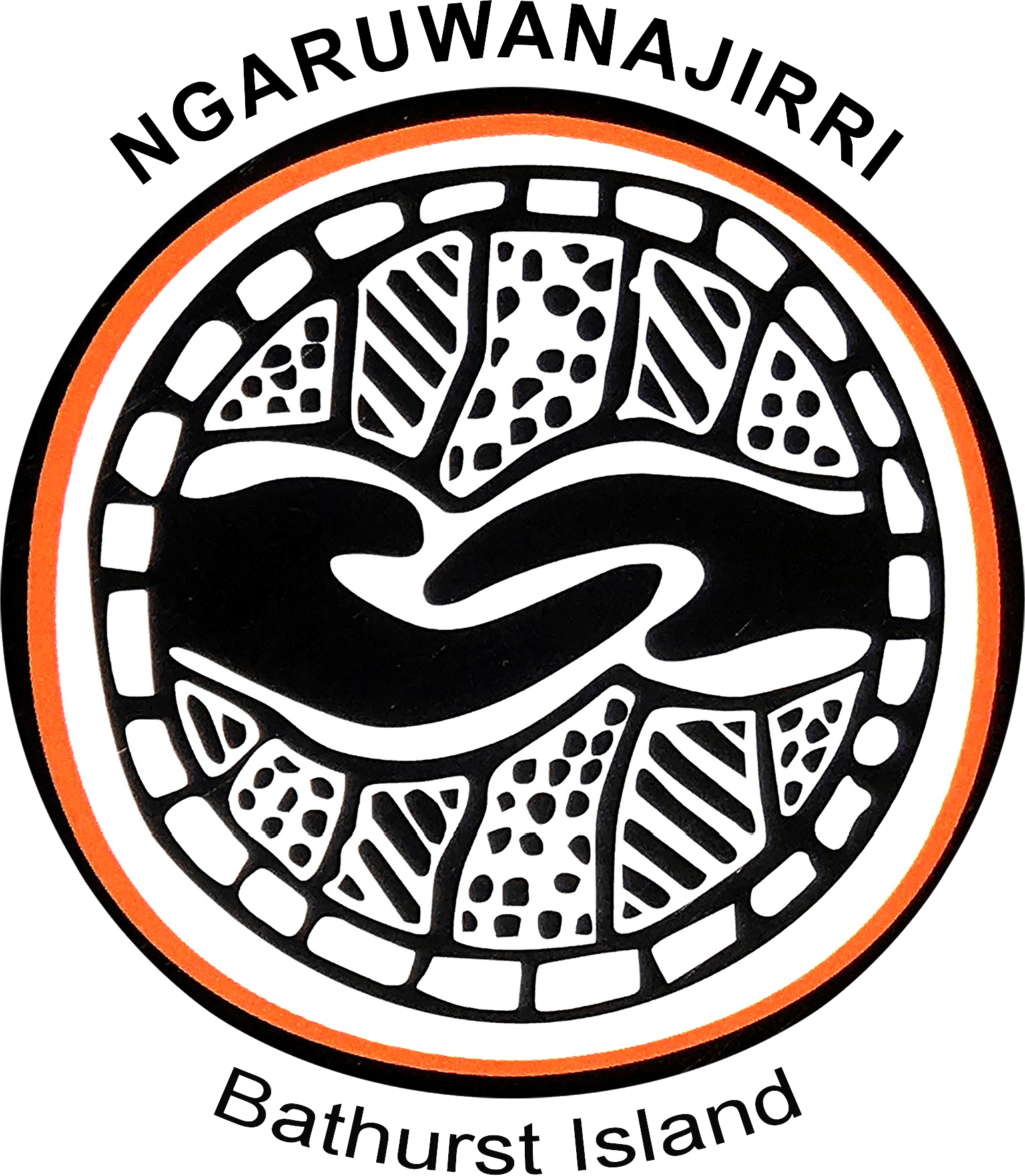Tiwi Culture and Ceremonies
Tiwi people have lived on Bathurst and Melville Island for thousands of years and maintain a unique language and culture deeply embedded with a connection to land, skin group, dance, song and artistic styles, all developed in isolation from the mainland.
Much of Tiwi art makes reference to the Palaneri (Tiwi Creation Period) and the Pukumani (funeral) and Kulama (initiation) ceremonies that followed.
The carving and painting of ironwood poles and figures is a Tiwi art and cultural tradition. Elaborately carved and painted in ochre, the Pukumani poles, or Tutini, are a major feature of the Tiwi Pukumani ceremony. The poles are installed around the grave site at the close of ceremony to signify the end of the mourning period.
With the painted ceiling panels above their heads, and the sounds and sights of the bush around, Ngaruwanajirri artists draw inspiration for their subject matter in pattern, line, and form. Their art may have a base in traditional patterns derived from family, nature, and wildlife or from the objects in the vicinity. Older cultural practices and memories are, however, within all Tiwi, especially those customs related to ceremonies and family.
Kulama
Like most other peoples of the world, Tiwi mark the stages of life. Births are texted to all relatives with elation; success in life is shared also, in pride and honour it brings to the family as well as the imminent distribution of any gains – whether those be a salary, a prize, a new car or a win at the card games. In the not so distant past the major life achievement ceremony was bravery, shown in the
Kulama.
Pukumani
The funeral ceremony is most important to Tiwi – enabling family to express grief and to allow the spirit of the deceased to find comfort and rest. The old grave sites throughout the bush exhibit long abandoned Pukumani pole installations like sculptures leaning to each other or resting, the old painted designs on their surfaces all but gone.
Our Big Tiwi Story
Purukupali
The characters of this story go back to ancient creation times. Purukupali was the great hunter and warrior, Bima, his wife came to also be known as Wai-Ai, curlew, and they had a son, Jinani. Purukupali’s brother Tapara is the other main figure in the story; he is the moon.
The carved figures from Ngaruwanajirri often represent one or more of these characters. Their story that follows tells how death came into the world.
